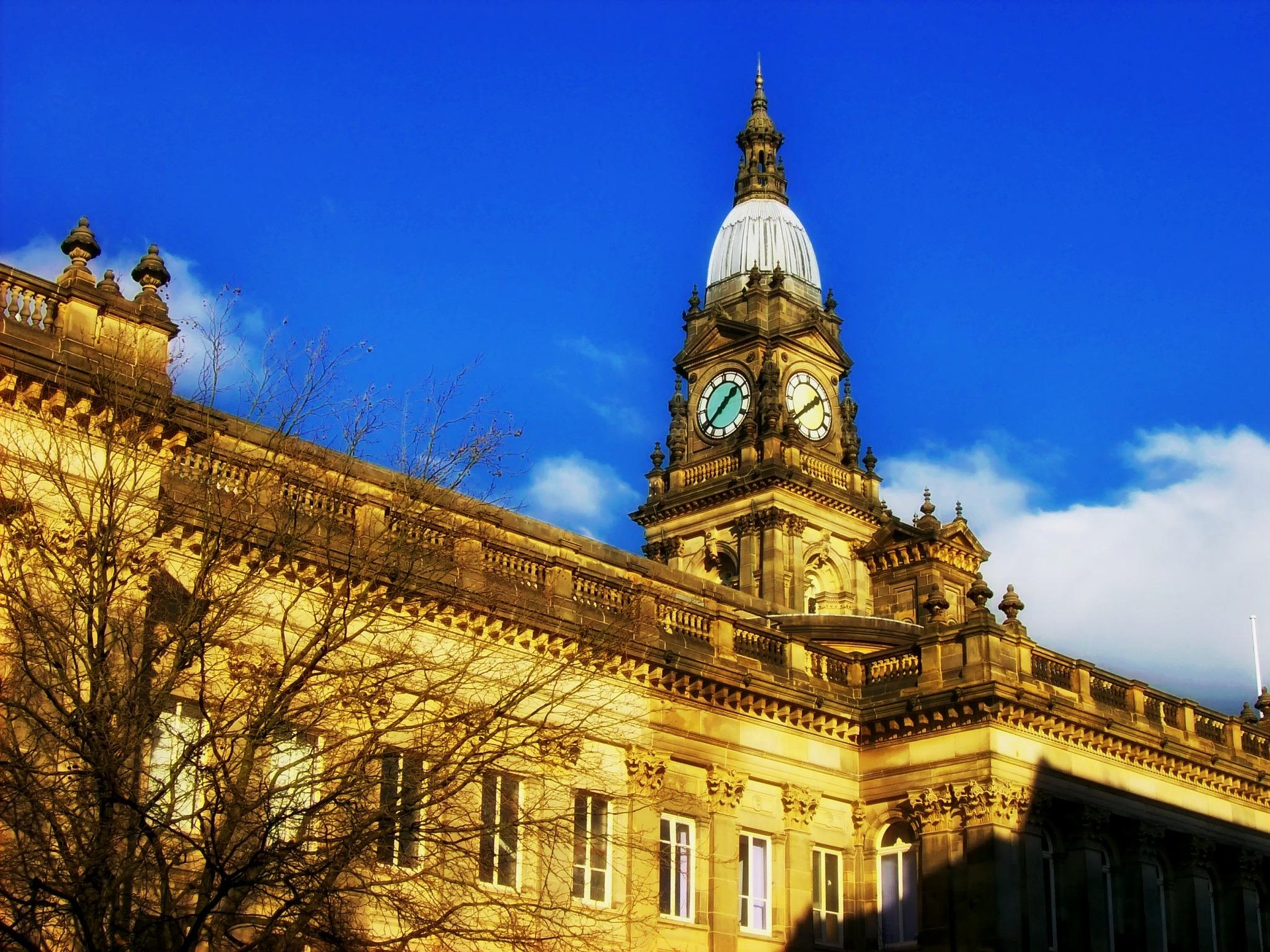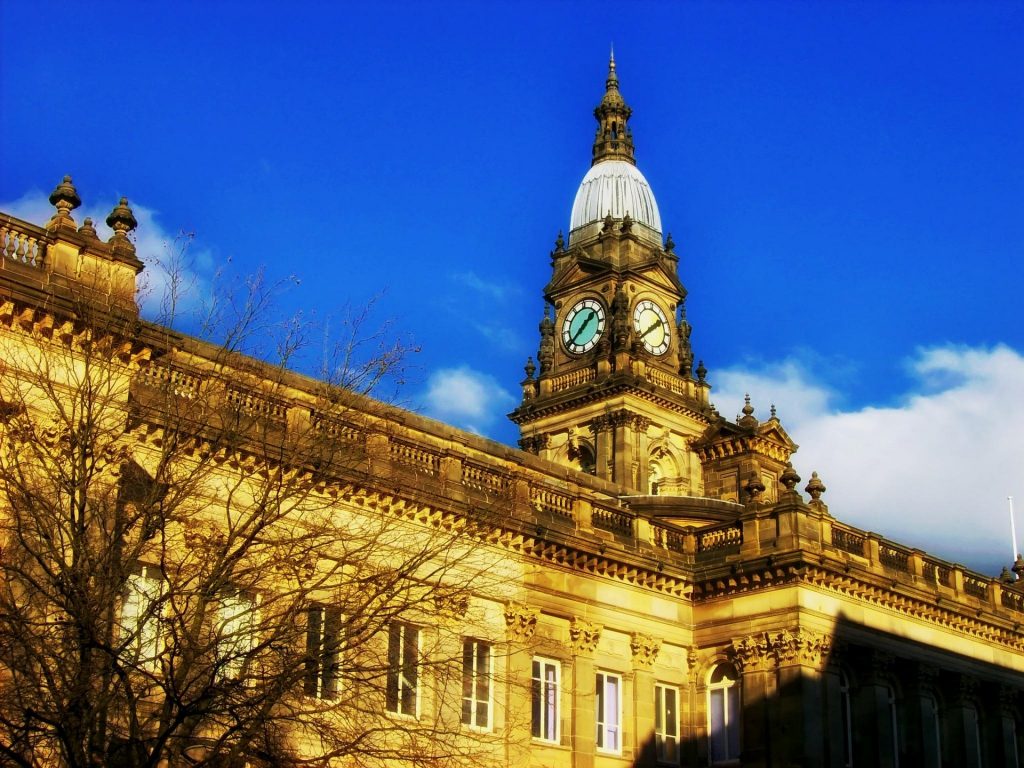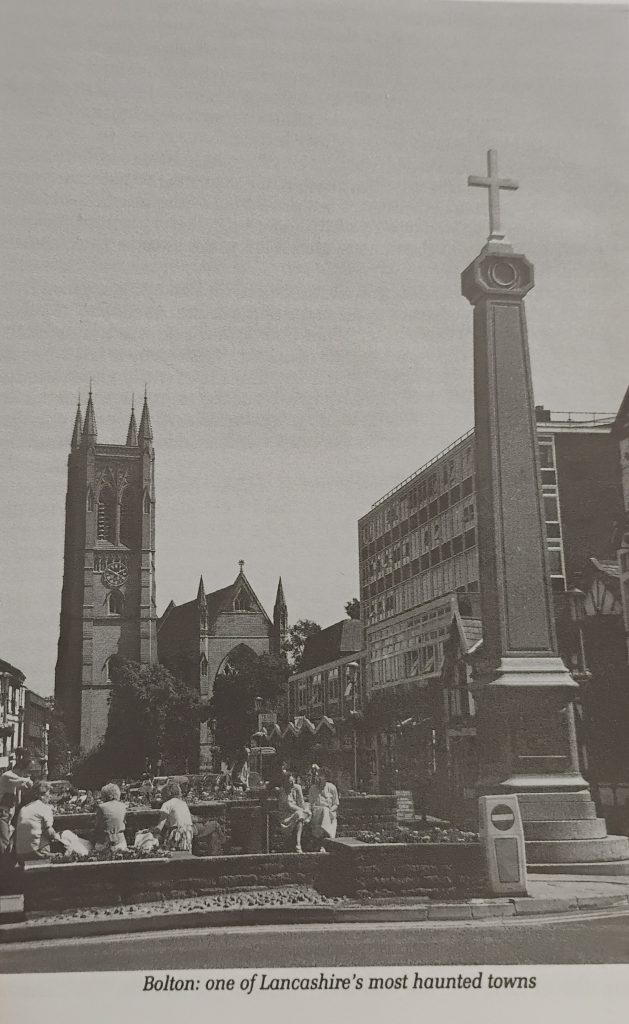

As I bimbled through Bolton, teeth chattering for coffee and inspiration, I immediately felt something strongly. Under the stark blue skies of the recent heatwave, I came to realise just how much history has lined these streets. Arriving from out of town, I pondered over the old town hall and the defining figure of Fred Dibnah.
Under the sunlight and statues, I felt a peculiar undertone. There is something unsettling about this place, beneath the church chimes and laughter of school children.
Later, as I buried myself into a library seat, my hands discovered something at the edge. My eyes fell deep into the page, a Hitchcock zoom overtaking my vision of the sentence below. “Bolton: is one of Lancashire’s most haunted towns.” A quiver went through me – whether from consternation or the mild air-conditioning, I was unsure. I have never been quite so friendly with the macabre yet somehow I had ended up in the heart of a haunted town. The question now was which road do I take: back towards the silky surface of denial or confront the woes which would surely drive my mind tonight. I decided comfort rarely makes for good reading.
The story of the A666 seemed like a good place place as any to start my journey. The Lancashire road has been dubbed ‘the Devils Highway’, given the well known reference to the number in the biblical book Revelations as the mark of the beast, which is thought to be a code for Emperor ‘Nero Caesar’. I wondered whether the drivers in this story were more familiar with the this fact or the highway code, as a sign on the road reads “81 CASUALITIES in 5 years – WATCH YOUR SPEED.” In April 1977, Coronation Street star Bev Callard was almost claimed as a victim of the bridge when she lost control of her Alfa sports car and smashed into the side barrier, despite her medium speed of 40 mph. Luckily she walked away with her life, along with some bruising and whiplash – her car was not so lucky. Perhaps the demonic presence there didn’t like the reference to the almighty, even if the omega wasn’t present.

The mile and a half known as St Peters Way between Farnworth and Bolton has a particularly devastating reputation, with 12 people known to have attempted suicide in the area between 1988-1998, as well as a recording of attempted murder in 1990. The population of problems had become so pronounced that local authorities considered erecting anti-climbing fences along the bridge. Many have also claimed to lose all recollection of driving over the infamous highway, with one market worker claiming him and his colleagues arrived at their destination in dazed distress, lingering from the lost time they experienced between Bolton and Pendlebury. None could explain why it took a full 30 minutes longer than it should have.
Another story I came across is the haunting of Minne Stott, a 17-year-old shop worker who lived in Clarendon Street. One night on a November evening in 1940, she was found dead in a narrow alley opposite after being brutally strangled. No one was ever brought to justice over the death.
A tragedy, which seemingly didn’t sit when with Minne. Many have claimed to see her, with a poignant example coming from 1987 when another 17-year-old saw a misty apparition of a young girl at the top of a flight of stairs at a showroom called Parker’s garage on Bradshawgate. The over 40-year-old crime was only made aware to the girl after the sighting of the spirit.
Bradshaw gate seems to be a place I should avoid, with another hair-raising tale of haunting coming from Wood Street. What is now Bolton Socialist Club was once the birth home of William Hesketh Lever in 1851, the founder of a great soap empire. Perhaps he and his wife’s death was not as clean as they were in life, as there have been phantom sightings of the pair in their Victorian garments in both 1972 and 1980. The latter date was from the recollection of a local councillor was supposedly alone there. The president of the club had also reported a ghostly hand touching his shoulder in 1980. Perhaps Lever had a distaste for their political leanings and wanted the pink-os out of his house in good order, although I doubt he would have used that phraseology.
Tightened by the turmoil, I looked around for comfort, only finding pale surfaces below and blue tinted panes above. The book cases seemed to be closing in around me. “Are you all right luv?” I heard wispy, mellifluous voice say behind me. I realised I was standing up, and used the moment to swivel round. In front of me was a warm smile with a pair of wide glasses framing a face topped with short silver hair, at the head of a petite stature. “You look like you’ve seen a ghost.” I explained my current pursuit to the distinguished lady, who later identified herself as local author turned library volunteer Dorothy Snelson. Dottie had knowledge of a local legend less of the supernatural nature (thankfully for me), taking me further into the past with story of George Marsh.
Staunchly behind the reforms that Henry VIII brought in, Marsh was appointed as a preaching minister in 1553 when Edward VI exceeded the throne, travelling throughout Lancashire spreading his Christian truth from what he saw as the foundational message of the New Testament he was so devoted to. Yet the protracted life of King Edward brought about a short renaissance of the old Catholic order. As Queen Mary snatched the throne, turning Marsh from priest to pariah in the space of a few days, a retribution of rough words rained down on his family. Fearful of the repercussions of the threats and the safety of his loved ones, he came out of hiding and handed himself in voluntarily. He was tried in the Upper Green Chamber at Smithills Hall for preaching ‘false doctrine’, Refusing repeatedly to disavow his staunch faith despite his family’s pleas, he stamped his foot in stubborn indignation, marking the stone floor outside the hall for eternity. George was given a heathens death of burning at the stake outside the city walls, but became a martyr to Anglicans throughout the country. It’s said that you can still see the print his boot left, his defiance branding the earth and foreshadowing the permanence of the Protestant faith that would soon sprout against the hard Catholic resistance in Bolton and beyond.
“Nothing like a bit of bloody history to lighten the mood” I quipped, to Dottie’s sympathetic laugh. Why does blood make me so light-hearted while ghosts make me pale? I thought as I thanked the kindly lady for her aid. Life filtered through the veins of the library as I made my way to the exit, the eerie portraits of long-dead people in the reception hall glaring down enviously at the flow. A brittle pane of glass marking the only dividing line between us and them. I am rather grateful, I thought as I strode back into the sunlight, that I did not arrive here at the close of October.
